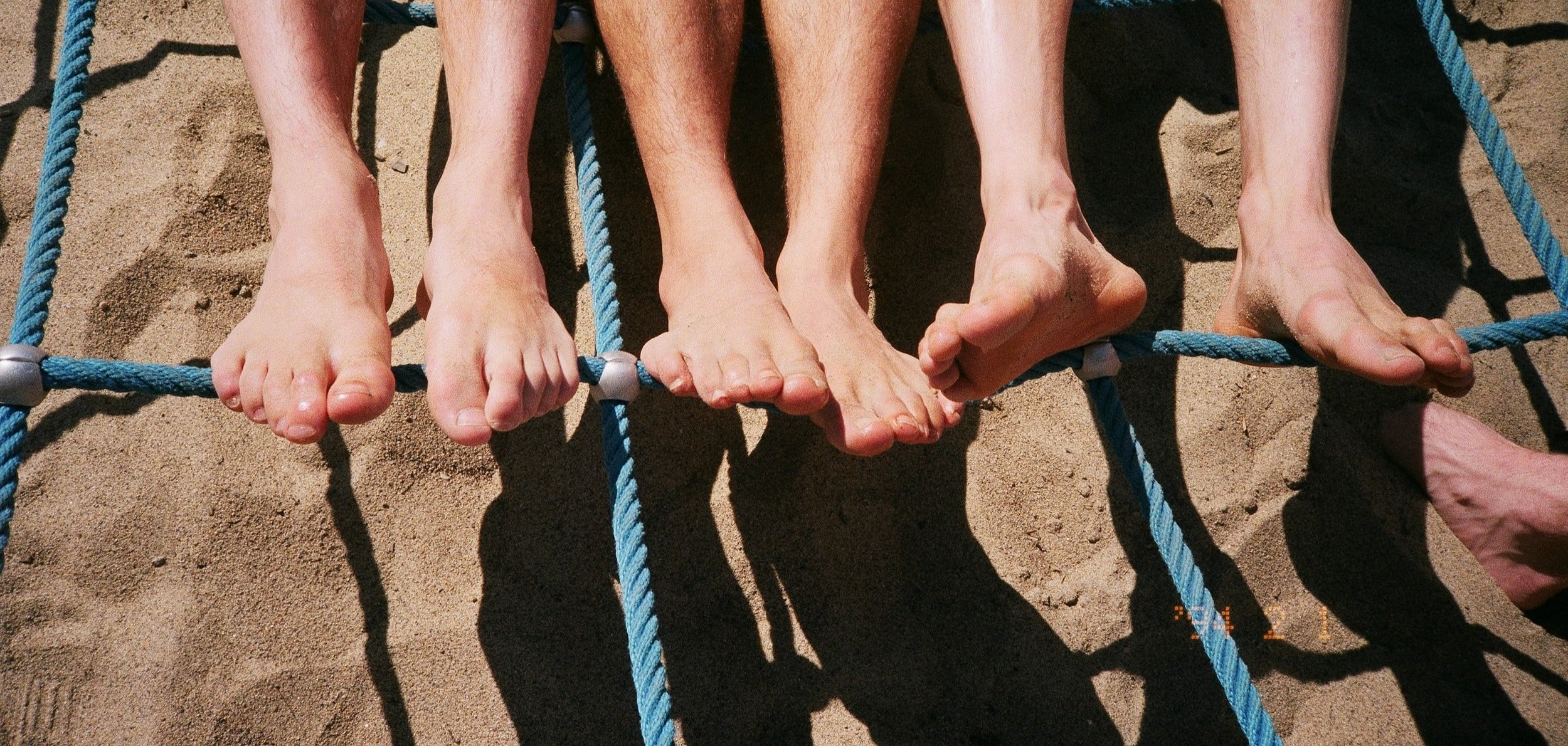Bunions
What causes them? And how to treat them.
What is a Bunion?
A bunion is a complex deformity of the big toe joint, in which the big toe deviates to towards the lesser toes. Commonly, a large “bump” (a soft lesion known as a bursa) forms on the joint itself. The bursa can become inflamed when irritated and is the most likely cause of pain for those suffering with bunions.
How Common Are They?
Studies consistently show that around 25% of adults aged between 18-65 years are affected by bunions, with the figure increasing to around 35% for those older than 65 years. It is also proven that females are twice as likely to suffer from the deformity than males.
What Causes Them?
Female Gender:
Due to factors such as female footwear (narrow, high heeled shoes) and differences in bone anatomy (increased likelihood of looser ligaments and increased flexibility of soft tissues/ foot joints).
Footwear:
Constrictive footwear is considered a predisposing factor for bunion formation/ pain, as the foot is irritated by a narrow toe box and pushed to deviate with the shape of the shoe.
Genetics:
“90% of patients with hallux valgus (bunion) had at least 1 similarly affected family member.” (Ray et al, 2019)
Type of Activity/ Exercise:
“..9.3% of the Muay Thai kickboxers….53% of the long-term high-level climbers…40.0% dancers…..Former ballet dancers (73.7%).” (Kwan et al, 2020)
Other Factors:
Includes advancing age, flat feet, arthritis (both rheumatoid and osteoarthritis) and obesity/ being overweight.
How Can They Be Treated?
There are two paths that you can follow with your treatment: conservative or surgical. In my opinion, it depends on what your goals are; if your goals are purely cosmetic, then conservative treatment will be largely ineffective. However, if your goal is pain relief, then conservative treatment should be effective in reducing symptoms.
Conservative treatment involves a few steps:
1) Pressure Relief: footwear changes & toe separator/protector.
2) Symptom Relief: anti-inflammatory measures.
3) Biomechanical Intervention: foot orthotics & exercises.
Effectiveness of Treatment:
Foot Orthotics & Toe Separator:
“(foot orthotics) with a toe separator provides a significantly positive reduction of the (bunion) of 5.79° (degrees)….can significantly reduce the pain level…” (Kwan et al, 2020)
“The insole with toe separator seems to be an effective orthotic treatment to reduce the pain in patients with painful hallux valgus (bunions)….” (Tehranisar et al, 2008)
Strengthening Exercises:
“Over a six-month period, specific foot exercises…showed an improvement in both foot pain and foot function.…there was a slight reduction in the (bunion) angle of both feet.” (Mortka et al, 2015)
“The subjects were asked to do the exercises 2 times daily with 10 repetitions for a period of 8 weeks…There was a significant decrease in the hallux valgus (bunion) angle, resting pain and walking pain in both groups.” (Mortka et al, 2015)
Night Splints/Braces:
“Only while the skeleton is still growing can the position of the great toe be improved with lasting effect…After the end of growth, adequate correction is no longer possible and conservative treatment is restricted to alleviation of symptoms.” (Wulker et al, 2012)
“..the night splint was unable to reduce the pain in these patients. Although, prevented the increase in angles in the two groups.” (Tehranisar et al, 2008)
Surgical Treatment:
“…follow-up for up to 5 years shows that overall, 85% of patients are satisfied and have a good clinical result. Ten percent are less satisfied and show a less beneficial outcome, and in 5% the results of surgery are poor.” (Wulker et al, 2012)
“There are numerous complications associated with hallux valgus (bunion) surgery. Recurrence is the most common complication, with rates ranging from as low as 8% to as high as 78%.” (Ray et al, 2019)
Conclusion:
Bunions are a very common issue seen by Podiatrists globally. Treatment success is usually guided by the patient; if the patient is vigilant at eliminating the factors that can/ have caused pain or led to bunion formation, then success can be more easily achieved. However, if the patient is non-compliant or unrealistic about conservative treatment, then a surgical option may be the most beneficial for them. Personally, I would rarely recommend surgery as a treatment option due to long recovery times (~8-12 weeks until normal, pain free walking) and the high chances of recurrence/ return of pain (most likely because the patient hasn’t addressed causative factors in the first place, or is fighting a battle against genetics that they can’t win!)


